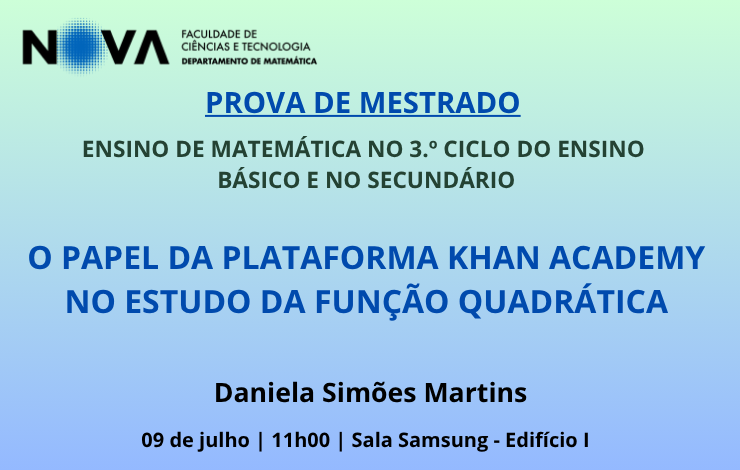The Center of Mathematics and Applications (NOVA Math), promote the Mini-course of Analysis with the title: “Introduction to Dyadic Analysis”. George Tephnadze (University of Georgia, Tbilisi, Georgia) is the speaker.
Abstract: The fact that the Walsh system is the group of characters of a compact Abelian group connects dyadic analysis with abstract harmonic analysis. Later on, in 1947 Vilenkin introduced a large class of compact groups (now called Vilenkin groups) and the corresponding characters, which include the dyadic group and the Walsh system as a special case. Pontryagin, Rudin, Hewitt and Ross investigated such problems of harmonic analysis on groups.
Unlike the classical theory of the Fourier series, which deals with decomposing a function into continuous waves, the Walsh (Vilenkin) functions are rectangular waves. There are many similarities between these theories, but there are also di�erences. Much of these can be explained by modern abstract harmonic analysis, which studies orthonormal systems from the point of view of the structure of a topological group. This point of view leads naturallyto a new domain of considering Fourier Analysis on locally compact Abelian groups and dyadic (Walsh) group provides an important model on which one can verify and illustrate many questions from abstract harmonic analysis. This introduction consists of 4 lectures and is aimed at Ph.D. students and researchers without an initial background on the subject.
Lecture 1: We define the Walsh group and functions and equip this group with the topology and Haar measure. Moreover, we investigate the character functions of the Walsh group, and the representation of the Walsh group on the interval [0,1). We also investigate some rearmament of the Walsh system, which is called the Kaczmarz system, and some generalizations, which are called Vilenkin groups and zero-dimensional groups.
Lecture 2: We define and investigate Dirichlet kernels, Lebesgue constants and partial sums with respect to the Walsh system and show that the localization principle holds for the Walsh-Fourier series and it is not true for the Walsh-Kaczmarz Fourier series. We de�ne Lebesgue points and investigate almost everywhere convergence of subsequences of partial sums of the Walsh-Fourier series of integrable functions.
Lecture 3: We define and discuss Walsh-Fejér kernels and means, WalshLebesgue points and investigate approximation properties and almost everywhere convergence of Fejér means in Lebesgue spaces.
Lecture 4: We define and discuss conditional expectation operators, martingales and martingale Hardy spaces. We also state several interesting open problems in this theory.
This introduction to dyadic analysis is based on the following recent book (where complementary information and several open problems can be found in more general case): L. E. Persson, G. Tephnadze and F. Weisz, Martingale Hardy Spaces and Summability of one-dimensional Vilenkin-Fourier Series, Birkhäuser/Springer, 2022.
10, 12, 16 and 18 December 2024 from 10:00 to 12:00.




